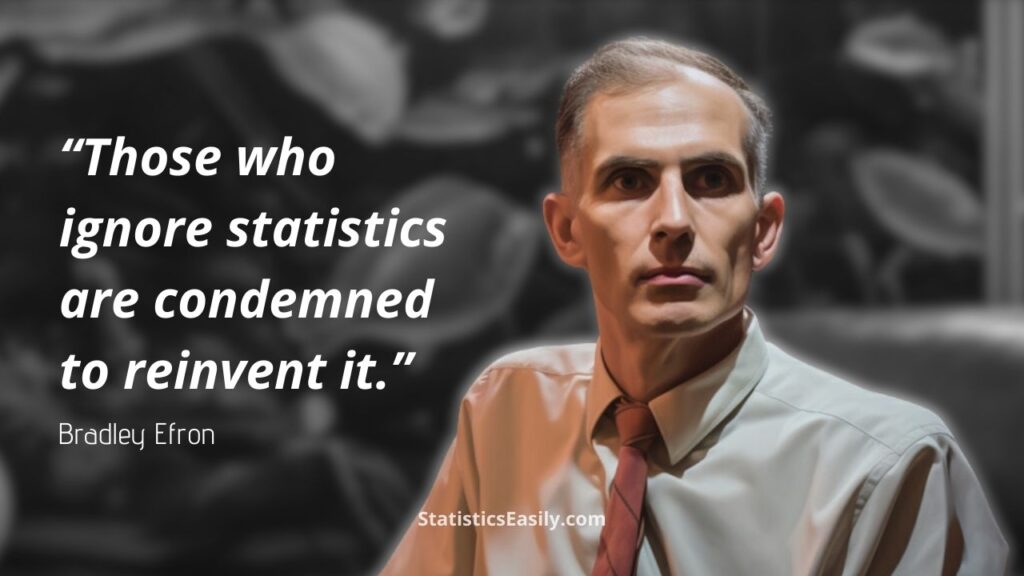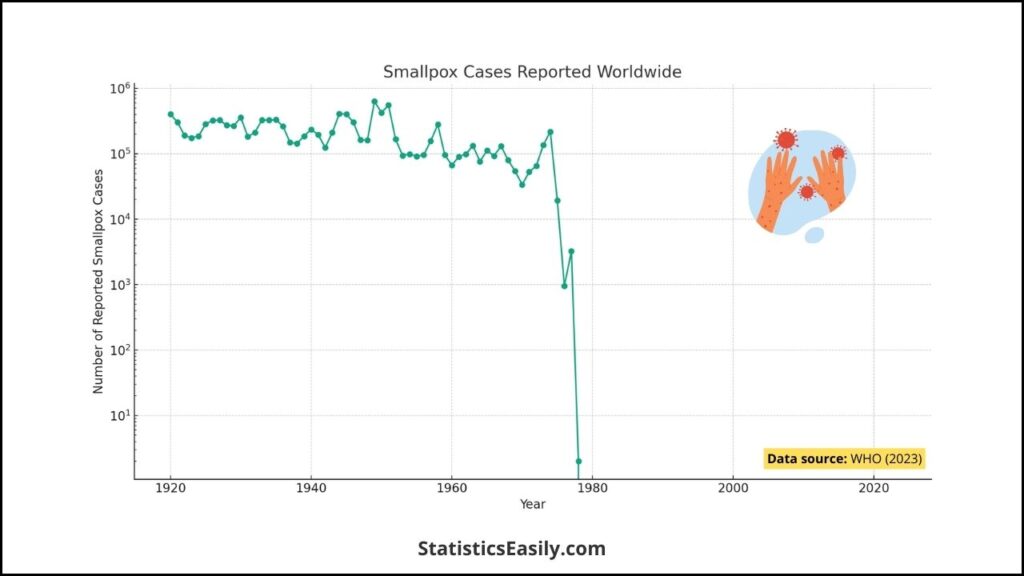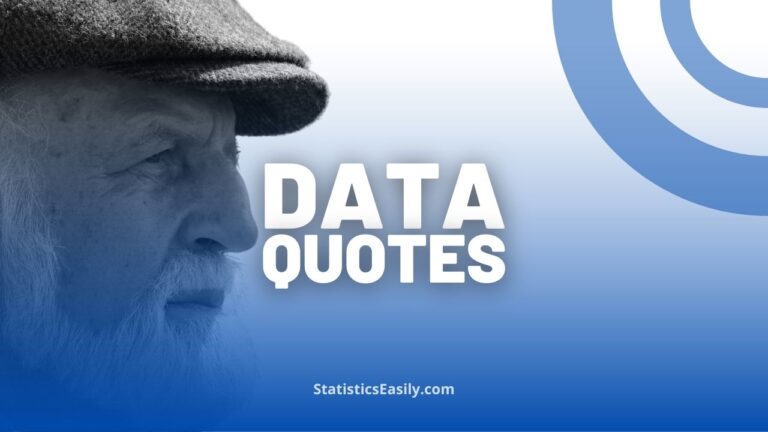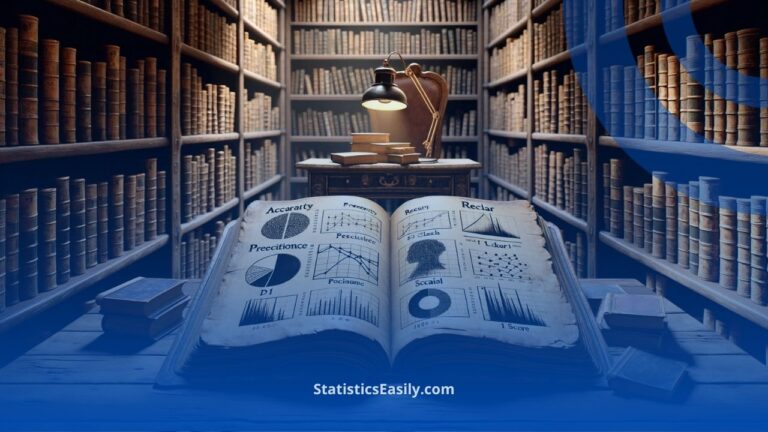Those Who Ignore Statistics Are Condemned to Reinvent it
You will learn why those who ignore statistics are condemned to reinvent it and its role in shaping informed decisions and innovative solutions.
Introduction
The role of statistics in decision-making and innovation cannot be overstated. In a world inundated with data, the ability to analyze and interpret this vast amount of information is paramount. Bradley Efron’s poignant observation, “Those Who Ignore Statistics Are Condemned to Reinvent it,” is a central theme for our discourse. This statement underscores the inefficiency and redundancy that ensue when statistical principles are overlooked.
Our article sheds light on the importance of embracing statistical knowledge. By weaving through historical contexts, practical applications, and the tangible risks associated with neglecting statistical evidence, we elucidate the pivotal role statistics play in not just avoiding the reinvention of methodologies but in paving the way for groundbreaking innovations and informed decision-making processes.
Through this exploration, we highlight the indispensable nature of statistics in driving efficiency and fostering an environment where data-driven insights lead to superior outcomes. This article is not just an academic exercise; it’s a call to action for professionals, researchers, and decision-makers to integrate statistical thinking into their daily practices to harness the full potential of the data.

Highlights
- Ignoring statistics often leads to redundant efforts in research and development.
- Statistical literacy empowers decision-makers to identify trends and make evidence-based choices.
- Case studies show that data-driven companies outperform their non-analytical competitors.
- Statistical errors have historically led to significant financial and operational losses.
- Advanced statistical methods are revolutionizing industries by predicting future trends.
Ad Title
Ad description. Lorem ipsum dolor sit amet, consectetur adipiscing elit.
The Historical Context of Statistics
The evolution of statistical methods has been a cornerstone in advancing human knowledge and innovation across various fields. From the rudimentary tallying techniques of ancient civilizations to the sophisticated algorithms of modern data science, the journey of statistics is a testament to human ingenuity and the relentless pursuit of understanding.
Early Beginnings
Statistics, in its most primitive form, can be traced back to ancient civilizations, where it was used for administrative and taxation purposes. However, in the 17th century, statistical methods began to take a more scientific form by introducing techniques for analyzing and interpreting data.
The 19th Century: The Birth of Modern Statistics
The 19th century marked a significant turning point in the history of statistics with the introduction of the concept of the ‘average man’ by Quetelet, which laid the groundwork for the field of social statistics. This period also saw the development of the normal distribution, which is fundamental to the field of probability theory and statistics.
The 20th Century: The Expansion of Statistical Application
In the 20th century, we have witnessed an explosion in the application of statistical methods, fueled by the advent of computing technology. This era saw the development of numerous statistical techniques, including hypothesis testing, regression analysis, and the Bayesian framework, which have become staples in statistical analysis.
The Impact on Various Fields
The impact of statistical methods on various fields cannot be overstated. Statistics has enabled researchers in science and engineering to validate theories and models with empirical data. In medicine, statistical analysis has been crucial in developing and evaluating treatments. In economics and business, statistical methods are used to analyze market trends, optimize operations, and inform strategic decisions.
Embracing the Data-Driven Era
As we stand in the 21st century, the importance of statistics continues to grow with the advent of big data and artificial intelligence. The ability to analyze vast datasets and extract meaningful insights is more critical than ever, emphasizing the adage by Bradley Efron, “Those Who Ignore Statistics Are Condemned to Reinvent it.”
This historical journey of statistics highlights the evolution of methodologies. It underscores the transformative impact of statistical thinking on decision-making and innovation. As we delve into data science and analytics, the lessons from history serve as a guiding light, reminding us of the power of data when harnessed with statistical insight.
Case Studies: Successes and Failures
In the intricate tapestry of decision-making and innovation, statistics stand as the beacon that guides toward enlightenment and away from the shadows of inefficacy. This section presents two poignant case studies: one illustrating the triumph of statistical insight and another, a cautionary tale of its disregard.
Success: The Role of Statistics in Public Health Initiatives
The eradication of smallpox is a testament to the power of international collaboration, public health strategy, and the effective use of statistical analysis. This monumental achievement was orchestrated by the World Health Organization (WHO) through an initiative formally launched in 1967 following a resolution by the World Health Assembly.
Strategic Application of Statistics: The success of the smallpox eradication campaign was underpinned by the strategic use of statistical methods to track the spread of the disease, evaluate the impact of vaccination efforts, and optimize the allocation of resources. Data-driven approaches enabled health officials to identify outbreak patterns, assess the vaccine’s effectiveness, and implement targeted vaccination campaigns, known as ring vaccination strategies, where immediate contacts of confirmed smallpox cases were vaccinated to prevent the spread.
Collaborative Global Effort: The eradication effort was a global endeavor requiring unprecedented coordination among countries, health workers, and international agencies. It was not solely the work of WHO but a collective effort involving national governments, non-governmental organizations, and communities worldwide. The initiative leveraged the strengths of various stakeholders, from local health workers who carried out vaccinations and surveillance to international experts in epidemiology and logistics.
Comprehensive Public Health Strategy: The campaign’s strategy extended beyond mere statistical analysis and vaccination. It encompassed rigorous surveillance, containment of outbreaks, and public health education to ensure community participation and compliance. The initiative also faced and overcame numerous challenges, including logistical difficulties in remote areas, vaccine storage issues, and the need to gain the trust of communities.
Eradication Achievement: The intensive efforts and strategic use of statistics in understanding and combating the spread of smallpox culminated in the WHO declaring the world free from smallpox in 1980. This declaration marked the end of a disease that had plagued humanity for centuries, saving millions of lives and setting a precedent for future public health initiatives.
This comprehensive approach to the smallpox eradication campaign underscores the multifaceted nature of global health initiatives, where statistical analysis plays a crucial role but is part of a broader strategy that includes public health policy, community engagement, and international cooperation.

Failure: The Challenger Space Shuttle Disaster
The Challenger space shuttle disaster on January 28, 1986, is a profound lesson in the importance of adhering to statistical risk assessments in engineering and decision-making processes. The tragedy unfolded when the space shuttle Challenger broke apart 73 seconds into its flight, leading to the loss of all seven crew members aboard.
Engineers’ Warnings and Statistical Data: On the eve of the scheduled launch, engineers from Morton Thiokol, the aerospace company responsible for the shuttle’s solid rocket boosters, expressed grave concerns regarding the O-ring seals’ performance in the forecasted cold weather conditions. Utilizing data from previous flights, they demonstrated a significant correlation between lower temperatures and the compromised integrity of the O-rings, which were crucial for preventing hot gases from escaping through the joint seals of the solid rocket boosters.
Decision-making Dynamics: These concerns were debated extensively during a teleconference the night before the launch. The engineers strongly advocated for a launch delay, citing the statistical evidence underscoring the heightened risk. However, after prolonged discussions and under considerable pressure to adhere to the scheduled launch timeline, the management at Morton Thiokol ultimately recommended proceeding with the launch. This decision was conveyed to NASA officials, who accepted the recommendation, leading to the fateful decision to proceed despite the warnings.
Catastrophic Failure: The Challenger disaster was directly attributed to the failure of the O-ring seal on the right solid rocket booster, compromised by the unusually cold temperatures on the morning of the launch. This failure allowed pressurized burning gas from within the solid rocket booster to reach the outside and impinge upon the adjacent external tank and the space shuttle itself. The structural failure of the external tank led to the shuttle’s disintegration.
Aftermath and Investigation: The Rogers Commission, established to investigate the disaster, identified the O-ring failure as the proximate cause and criticized both NASA and Morton Thiokol for their decision-making processes. The commission’s report highlighted a culture within NASA and its contractors that was described as accepting too much risk and flaws in communication and decision-making procedures.
Practical Applications of Statistics
In the contemporary era, where data is ubiquitously interwoven into decision-making, statistics emerge as an indispensable tool. The applications of statistics in modern analytics, research, and decision-making processes are vast and varied, transcending numerous domains of human activity.
Data-Driven Decision Making
In business, statistics provide a scientific foundation for decision-making. Companies can forecast trends, identify customer preferences, and make informed strategic choices through regression analysis, hypothesis testing, and predictive modeling. For instance, retail giants use statistical models to determine stock levels, optimize logistics, and personalize marketing strategies to enhance customer experiences and maximize profits.
Research and Development
Statistics are the linchpin of experimental design and data interpretation in research, particularly within the biomedical and social sciences. Statistical methods enable researchers to ascertain the validity of their findings, control for confounding variables, and rigorously test their hypotheses. The randomized controlled trial, a staple in clinical research, relies heavily on statistical analysis to conclude the efficacy of new treatments or interventions.
Public Policy and Economics
Policy-making bodies and governments employ statistics to shape public policy and understand economic conditions. Economic indicators such as unemployment rates, inflation, and GDP growth are statistical measures that influence monetary policy, fiscal planning, and social welfare programs. Moreover, statistical analysis aids in the assessment of policy outcomes, thereby facilitating adjustments and improvements in future policy formulation.
Quality Control and Improvement
Statistics are crucial for quality control and process improvement in manufacturing and production. Statistical process control (SPC) techniques monitor and control production processes to ensure that they operate at their highest potential and that the products meet specified quality standards.
Environmental and Ecological Analysis
Statisticians play a vital role in environmental science. They analyze data to track changes in climate patterns, model the impacts of pollution, and assess biodiversity. This information is essential for developing strategies to mitigate environmental damage and manage natural resources sustainably.
Sports Analytics
The world of sports has also embraced statistical analysis to enhance team performance and strategy. Metrics such as on-base percentage in baseball or expected goals in soccer provide coaches and managers with insights to make data-backed decisions that can change the course of a game or season.
Social Media and Marketing
Statistics are used in social media and digital marketing to analyze user engagement, optimize ad placement, and understand consumer behavior. By leveraging data, marketers can tailor campaigns to target audiences more effectively, maximizing return on investment.
The Risks of Ignoring Statistical Evidence
The perils of neglecting statistical evidence in planning and execution can be far-reaching, with consequences that may affect businesses, health outcomes, and even the safety of individuals. This disregard can lead to inefficiencies, increased costs, and decisions that lack a robust foundation, ultimately resulting in outcomes that are, at best, suboptimal and, at worst, catastrophic.
Misguided Business Decisions
In business, failure to heed statistical signals can lead to poor strategic decisions. For instance, a company that ignores market trends indicated by statistical analyses may continue to invest in declining products or services, leading to lost revenues and market share. This can be particularly damaging in fast-paced industries where data-driven agility is critical to maintaining competitive advantage.
Healthcare Setbacks
In healthcare, overlooking statistical evidence in the research and development of new treatments can have dire consequences. It may result in the release of ineffective or harmful medical interventions, potentially endangering patients’ lives and resulting in costly legal and reputational repercussions for the firms involved.
Economic Policy Errors
When policymakers ignore economic statistics, they risk implementing measures that do not address or exacerbate the underlying financial issues. For example, failing to consider economic indicators such as inflation rates or unemployment statistics when making fiscal policy decisions can lead to increased inflation or higher levels of joblessness.
Engineering and Safety Oversights
Disregarding statistical risk assessments in engineering and safety-critical fields can lead to tragedies like the Challenger disaster. In these domains, ignoring the statistical probabilities of failure does not merely result in financial loss but can endanger human lives.
Environmental Mismanagement
Ignoring statistical environmental data can lead to the mismanagement of natural resources, ineffective responses to climate change, and poor conservation strategies. This can have long-lasting effects on biodiversity, ecosystem services, and the sustainability of human societies.
Ad Title
Ad description. Lorem ipsum dolor sit amet, consectetur adipiscing elit.
Conclusion
In exploring the integral role of statistics in shaping the modern world, we have navigated through the annals of history, examined real-world applications, and scrutinized the sobering outcomes when statistical evidence is cast aside. The journey reaffirms Bradley Efron’s assertion: “Those Who Ignore Statistics Are Condemned to Reinvent it,” a sentiment that resonates profoundly throughout the article.
Integration of Historical Wisdom and Modern Insight
We delved into the historical evolution of statistics, from early empirical efforts to contemporary data science, showcasing the unbroken thread of analytical inquiry that has propelled human advancement. This historical perspective enriches our understanding and acts as a bulwark against the redundancy that ignorance of statistical principles might engender.
Empirical Evidence as the Cornerstone of Progress
The case studies, including the triumphant global eradication of smallpox and the tragic Challenger disaster, are stark reminders of statistics’ dual potential to elevate or admonish. These narratives underscore the imperative of integrating statistical literacy into our decision-making fabric, lest we repeat the errors of the past.
The Breadth of Statistical Applications
From healthcare to policy-making, environmental management to sports analytics, statistics form the backbone of informed decision-making and strategic planning. Embracing statistical tools and techniques is prudent and necessary for harnessing the burgeoning data landscape.
Heeding the Call to Action
As we stand on the cusp of a data-driven future, this article serves as a clarion call for professionals, researchers, and policymakers to embed statistical thinking into their workflows. This call is underscored by the need for efficiency, innovation, and a steadfast commitment to evidence-based practices.
The Ethical Imperative
We must remember that statistics are not merely numbers but the cipher to human stories, the compass guiding ethical choices, and the blueprint for a future built on the solid foundation of knowledge.
We reaffirm the importance of statistical knowledge — not as an esoteric discipline reserved for academics but as a vital instrument in our collective toolkit, warding off inefficiency and illuminating the path to enlightened, data-informed decisions. As we advance, let us carry the torch of statistical insight, ensuring that it sheds light on the decisions shaping our world, lives, and future.
Recommended Articles
Delve deeper into the power of data! Our blog features more articles on statistics, data analysis, and data science to enhance your knowledge and decision-making skills.
- 10 Revolutionary Techniques to Master Statistics and Data Analysis Effortlessly!
- How Statistics Can Change Your Life: A Guide for Beginners
- 7 Myths About Statistics You Need to Stop Believing
- 5 Statistics Case Studies That Will Blow Your Mind
- Statistics is the Grammar of Science
Frequently Asked Questions (FAQs)
Q1: Why is statistical literacy critical? Statistical literacy is crucial for interpreting data correctly, making informed decisions, and avoiding the pitfalls of misconceptions and biases.
Q2: How do statistics drive innovation? Statistics drive innovation by providing a factual basis for testing hypotheses, validating research, and guiding the development of new technologies and methodologies.
Q3: Can ignoring statistical data have real-world consequences? Ignoring statistical data can lead to flawed decision-making, inefficiencies, increased costs, and missed opportunities.
Q4: What is the role of statistics in business and economics? In business and economics, statistics are used for market analysis, forecasting trends, optimizing operations, and improving financial performance.
Q5: How do statistics contribute to scientific research? Statistics are fundamental to scientific research, enabling researchers to validate theories, analyze experimental data, and draw reliable conclusions.
Q6: What are some common statistical fallacies to avoid? Common misconceptions include misunderstanding causation and correlation, ignoring sample size, and overlooking the margin of error.
Q7: How can one improve their statistical literacy? Improving statistical literacy involves studying statistical methods, practicing data analysis, and applying statistics in real-world scenarios.
Q8: What is the impact of big data on statistics? Big data has transformed statistics by providing vast datasets for analysis, enabling more precise and comprehensive insights across various fields.
Q9: How do statistical methods enhance decision-making? Statistical methods improve decision-making by providing objective, data-driven insights, reducing uncertainty, and identifying patterns and trends.
Q10: What are the ethical considerations in using statistics? Ethical considerations include ensuring data accuracy, respecting privacy, avoiding data manipulation to mislead, and transparently reporting results.








